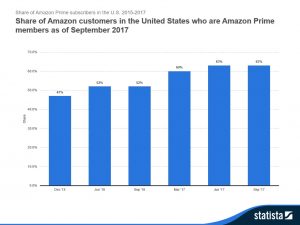
In early October, Social Fresh published their list of the top business blogs of 2014. If you’re looking to start or improve your own business blog in 2015, take the time to visit each of these blogs to learn from their examples.
What I found even more instructive about the Social Fresh post were the three criteria the judges used to rate each of the finalists. We can all apply these to assess and plan our own blogging efforts for 2015 and beyond.
As I was writing this post, I also came across a business model based on a three-legged stool. I found helpful synergies between those concepts and these three blogging standards from the Social Fresh post:
-
Calls to action
Is the blog actively trying to convert a user in some way? This might be an email signup, a white paper download link, or even a simple CTA to watch, share, or comment. Is there a clear business strategy being executed?
I love that this was first. It really speaks to the marketing part of content marketing. If each and every blog post isn’t trying to advance your relationship with the reader, then why bother?
Note the last sentence: Is there a clear business strategy being executed? Why are you blogging in the first place? What business goals is your blog serving? How will you know you’ve reached them?
The first leg of the business stool is money – there needs to be a clear path between reading your content and becoming a customer – even if that journey takes a long time and involves several steps.
For example, asking someone to sign up for your newsletter can create an opportunity to build a trusting relationship that leads to a later sale or referral.
Action: Make it clear and easy for your reader to follow through with an action that will lead them closer to doing business with you. Your call to action may appear at the end of the post, somewhere else in the post, and/or as part of the site design of each page.
-
Content quality/consistency
Is the blog actually providing value? Is the content good and appealing to readers? Is the company regularly producing content?
Quality content is the purpose of the Content Mastery Guide blog and all of my work. While I personally strive for a weekly publication schedule, I would rather leave a hole in my calendar (and that definitely happens!) than post something that feels rushed, incomplete, or sub-standard.
The second leg of the business stool is infrastructure – in this case whatever you do to consistently produce high-quality content on your business blog. This may include using an editorial calendar, managing your blogging time, and editing your work before you publish.
Action: Define a clear plan for your blogging success and revisit often to stay on track. Commit to whatever you need to start doing, stop doing, or keep doing in order to blog well and blog often.
-
Audience engagement
Are there any comments? Are there a lot of social shares? Are people online talking about the content? Is there an audience engaged with the content?
I’ve never used comments as a measure of business blogging success (after all, would you rather get blog comments or calls from customers?). Today there are so many other powerful ways to interact with you and your content.
The third leg of the business stool is people – if a blog post publishes in an empty forest, does anyone read? Your blog needs a community of readers who see, reply to, like, comment and share your posts.
You may also find that you need different people to take on the many tasks involved in business blogging, whether that’s assigning a team member to coordinate and edit submissions, or outsourcing the whole process to a business blog writing service.
Action: Use social sharing buttons that make it easy for readers to promote your post to their networks. Share the posts widely across your different social media platforms. Reply graciously to all feedback and mentions. Build a blogging team to support your efforts.
To learn from 2014’s top business blogs, ask yourself whether your blog has the business strategy, consistency and quality, and audience involvement it needs to succeed in 2015. Start with these simple actions and let me know how it goes in the comments!
Digital & Social Articles on Business 2 Community
(388)
Report Post





